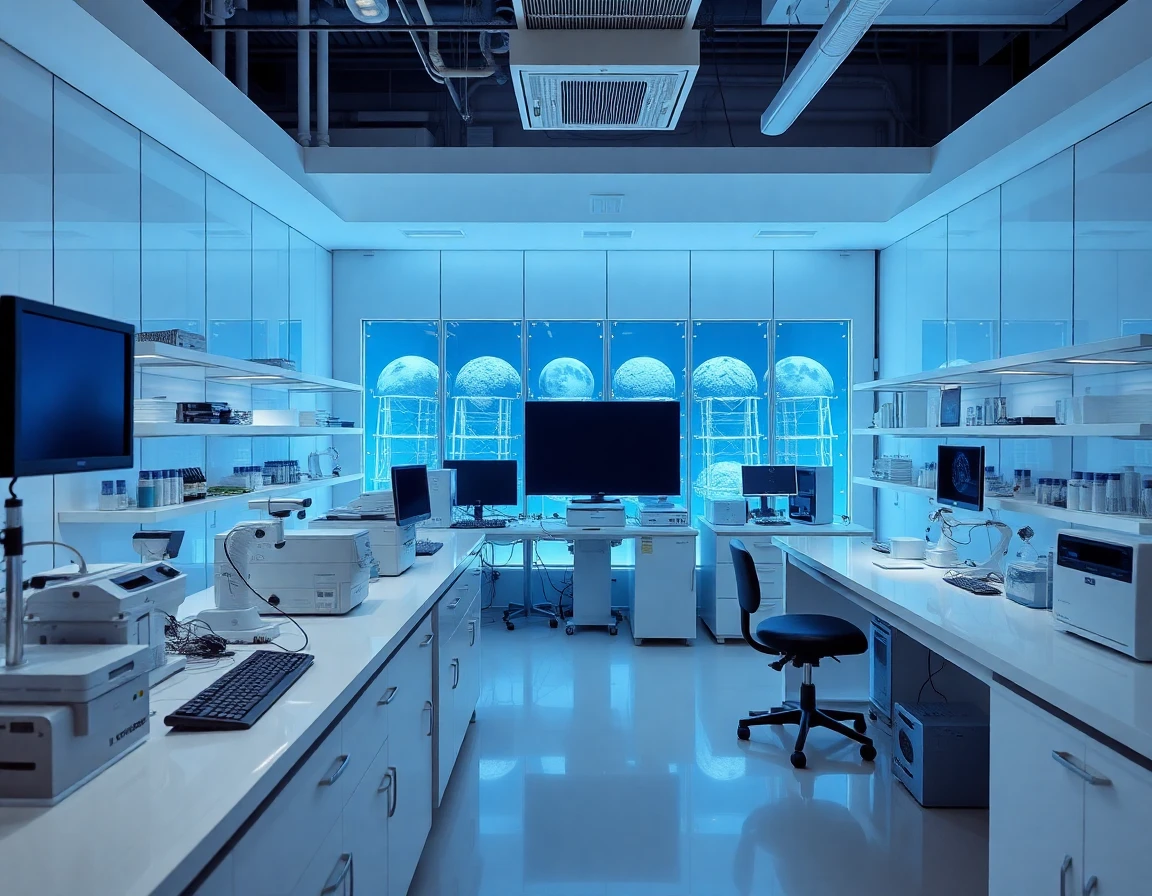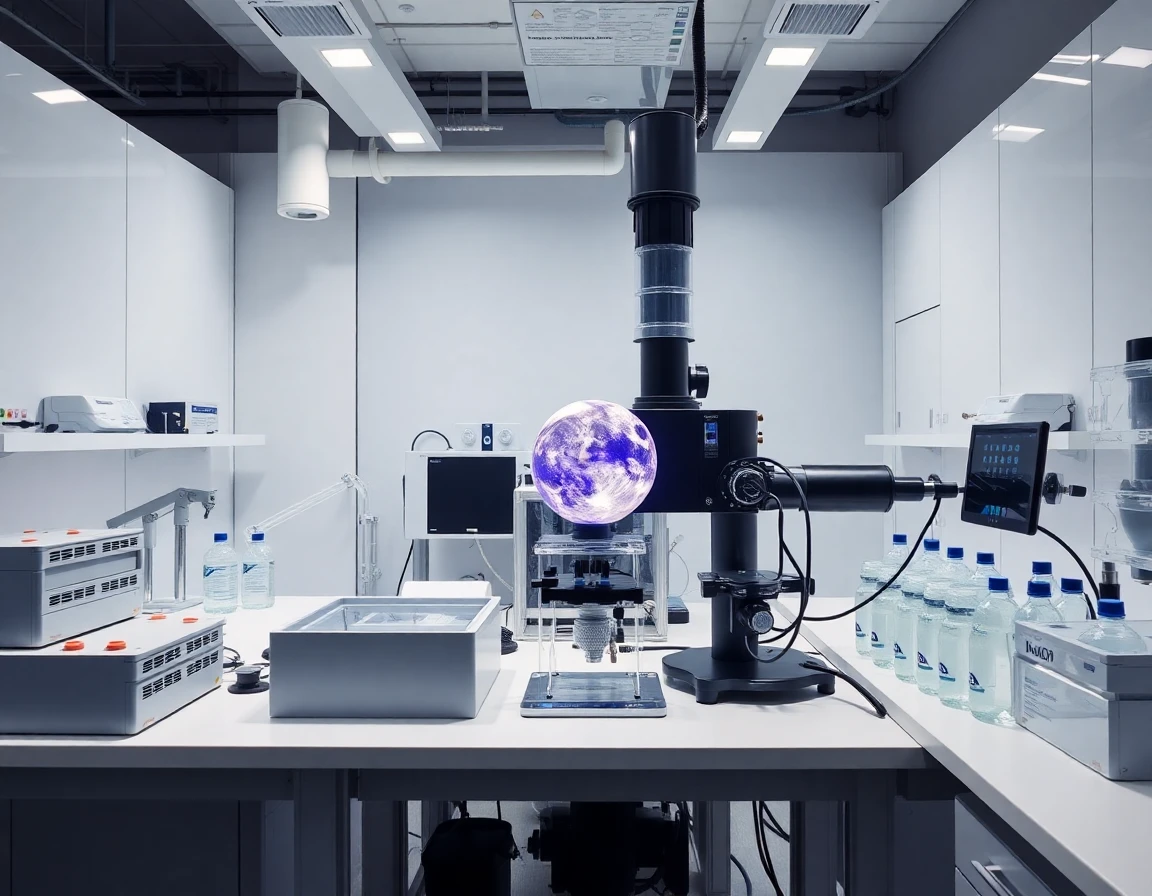As humanity sets its sights on sustainable long-term presence beyond Earth, lunar mining emerges as a pivotal component of this vision. Recent developments in both governmental and private sectors underscore significant strides toward extracting and utilizing resources from the Moon. These efforts not only promise to redefine economic models in space exploration but also have profound implications for the aerospace, defense, and technology sectors.
The In-Situ Resource Utilization (ISRU) Revolution
At the forefront of lunar mining initiatives is NASA’s Artemis program, which aims to return humans to the Moon and establish a sustainable presence. Central to this mission is the concept of In-Situ Resource Utilization (ISRU), which focuses on harnessing lunar resources to support human activities. Key materials identified for extraction include oxygen, silicon, aluminum, iron, titanium, and notably, water ice, which is primarily located at the lunar poles.
Water ice is a game changer, as it provides not only drinking water but also hydrogen fuel—crucial for sustaining lunar bases and significantly reducing mission costs. By enabling refueling on the Moon, ISRU could transform lunar missions into cost-effective ventures, allowing for more ambitious exploration goals.
Private Sector Initiatives: A New Frontier
The private sector is not far behind in this race, with companies such as Astrobotic and Intuitive Machines developing advanced technologies to extract lunar materials. These missions are expected to transition from concept to execution within the next few years, with significant milestones planned for late 2025.
In a noteworthy development, AstroForge, a California-based startup, is gearing up for its first private mission beyond the Earth-Moon system, set for October 2025. Their spacecraft, Vestri, will dock with a near-Earth asteroid to assess and eventually mine valuable metals like cobalt, nickel, and platinum-group metals. These materials are essential for modern clean energy technologies, including batteries and renewable infrastructure. The mission aims to return one to two tons of asteroid material to Earth, marking a critical step in commercial space mining.
Economic Viability and Market Opportunities
Industry experts highlight that the initial focus of space mining will likely be on extracting materials for use in space, thereby avoiding the prohibitive energy costs associated with launching materials from Earth. Transporting resources from the Moon’s surface to cislunar space requires approximately 20 times less energy than moving them from Earth. This economic advantage could allow for a target cost of $500/kg for lunar-derived propellant versus $3000/kg from Earth, paving the way for commercial opportunities in lunar mining.
However, to achieve large-scale operations, the development of a robust industrial infrastructure in space is crucial. Current projections suggest that the transition from Earth-supplied materials to lunar-sourced materials will hinge on innovations that seamlessly integrate traditional mining expertise with cutting-edge space technologies.
Bridging Two Worlds: Mining Expertise Meets Space Innovation
The success of lunar mining operations will rely heavily on a hybrid approach that merges conventional mining techniques with advanced space technologies. This integration is critical for overcoming the technical and operational challenges associated with extracting and processing lunar resources.
For instance, high-performance MEMS accelerometers and advanced sensor modules can enhance navigation and monitoring during mining operations on the Moon’s rugged terrain. Utilizing robust systems like the YWJ01ZB150, a professional gyro theodolite series, will ensure precise angle measurement for surveying lunar sites, while high-precision advanced navigation systems with fiber optic sensing coils can provide exceptional stability and accuracy in positioning.
Future Prospects of Lunar Mining
As lunar mining transitions from theory to practice, the implications for the aerospace and defense sectors are profound. The extraction of essential minerals from the Moon could revolutionize supply chains, particularly for critical materials needed in defense and technology applications. Furthermore, the establishment of a sustainable lunar economy could serve as a stepping stone for deeper space exploration, including missions to Mars and beyond.
Conclusion
In conclusion, lunar mining is not merely a futuristic concept; it is rapidly becoming a viable reality through the concerted efforts of both governmental organizations and private enterprises. As we look towards the future, the ongoing advancements in ISRU technology, economic viability, and the integration of traditional mining practices with innovative space solutions will undoubtedly shape the next era of space exploration. The Moon, once considered a distant dream, now stands as a critical asset in humanity’s quest for sustainable off-world living.
References
-
The lunar mining gold rush is coming – and success … (www.copernical.com) - 10/22/2025 The lunar mining gold rush is coming – and success requires bridging two worlds.
-
Can We Really Mine on the Moon or Mars? (www.essentialminerals.org) - 10/21/2025 Learn how scientists and companies are preparing to mine on the Moon and Mars. Explore what minerals exist, how extraction might work, …
-
Space mining countdown has started (resourcingtomorrow.com) - 12/21/2024 Industry News. IMARC preview: Epiroc’s Matilda ready to waltz in. 15 October 2025. New truck a ‘critical platform’ in mining’s transition to zero-emission …
-
Space Mining Startup Confirms First Private Mission to … - ICAD (www.icad.com) - 11/26/2024 AstroForge’s mission, launching in October 2025, will assess an asteroid’s metals and aims to return one to two tons of material to Earth.



